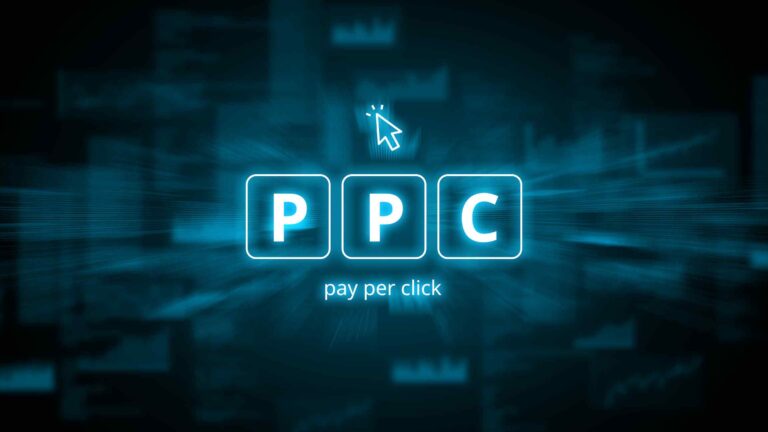Email marketing is a tried-and-tested method in the recruitment industry, offering a personal yet scalable way to reach potential candidates and clients. Here’s how to leverage it effectively, what to watch out for, systems you can use, and how to get the most out of this recruitment marketing tactic.
Segmentation
Not all emails are suitable for every recipient. Sending emails that are irrelevant to the recipient is one of the surest ways of individuals unsubscribing from receiving future emails from you. Too many of these unsubscribing or reporting spam, can result in your domain being blacklisted – and this is something you want to avoid at all costs. Getting your domain blacklisted can prevent genuine (non-promo) emails from being delivered to their recipients.
So, we recommend segmenting your audience. If you’re using a CRM and/or a mailing service, this is relatively straightforward. Segment your audience with key characteristics – e.g. job types, job title, seniority, location, skills, etc. You can then create sub-segments that merge multiple characteristics.
It’s much better to send an email campaign to a handful of targeted contacts, than it is to send a mass email to hundreds of potentially irrelevant recipients.
Content
Whether it’s job alerts, latest available candidates, or simply company updates, the content should offer value to the recipient. Always aim for quality over quantity. And as per the segmentation section above, make sure you make the content you send relevant to the recipient. Always remember as well, that what you deem to be interesting may not always be interesting to your recipients – so think carefully about what you send.
Personalisation
Personalised emails have higher engagement rates. Use the recipient’s name and reference specific interactions where possible. Many email service platforms or CRMs will allow you to merge specific fields from your database or email distribution list so that your one-to-many email communication can appear as though it’s written specifically for an individual. It obviously works better if the content is very relevant for the recipient too, so send targeted content to narrow segments of your database for the best impact.
Email design
There are a variety of approaches that can be adopted here. HTML-based emails, and those available via email marketing platforms, can look great but it’s worth being careful here as they can display quite differently depending on how your recipients are receiving and viewing them. Outlook, for example, displays emails very differently to the Mail app on an iPhone.
There are some good design services – like BeeFree – that can help create something visually stunning, but it’s also worth not forgetting simple, plain text emails. These look and feel like the kind of email you’d hand-craft yourself in your mail application of choice and can look much more authentication, genuine, and less like a mass mailshot. With personalisation added in too, they can offer result in much higher engagement and response levels.
CTAs
Clear and compelling Call to Actions (CTAs) guide the recipient on what to do next. Whether it’s applying for a job, making a referral, or updating contact preferences for example, you want it to be clear and easy for your readers to do what they need to do. If you’re sending a lengthy email, think about maybe repeating the CTA throughout the body of your email too.
Ideally, any links you add should have some ability to track click-throughs (that is, understanding who clicks on a link from your distribution list, and/or how many times a link gets clicked on). Email platforms like those recommended below do this automatically. Alternatively, if the destination of a CTA is your website, you can also track click-throughs in this way.
Metrics
Track key metrics like open rates, click-through rates, and conversion rates to gauge the effectiveness of your campaigns. Use this data to refine future emails. Do more of the things that work, that get good engagement, and scale back on the things that don’t work. It’s as simple as that.
A/B testing
Experiment with different subject lines, content formats, and CTAs to find what resonates most with your audience. A/B testing refers to a specific methodology for varying an email campaign across typically two different audiences and seeing which variation performs better. Certain email marketing platforms will help manage this process for you and mid-campaign automatically switch to the highest performing variation – but this only really works when there are thousands of recipients available in your distribution list.
Alternatively, you can do this in a more manual way by simply splitting your segmented audience in half and sending each half a different variation of your email. For example, you may have a ‘hot job’ that you want to share with a relevant segment of your audience. You could send a plain text email with the job details to half your audience, and a more graphical email to the other half and see which gets the best response rate or engagement.
Recommended services
There are so many different services to choose from – and if you want to manage your email marketing yourself, then take a look at the likes of Mailchimp, ActiveCampaign, Campaign Monitor – and many others. They do need some configuration and domain authentication (so that they can send emails on behalf of your business), but are largely straightforward to use.
Naturally things get more complicated when you start introducing automation, personalisation, HTML email templates, and list management – but that’s where engaging with a reliable recruitment marketing partner like APEX can really be helpful. An agency like APEX will be experienced at working with these platforms and can manage the process of configuring and running email marketing campaigns for your business.
CRM emails
The majority of recruitment CRMs will also allow you to do much of the email marketing activity we’ve already discussed, but will be more closely integrated with your CRM. This has the added advantage of reduced importing/exporting of data between different platforms, but can be more limited when it comes to advanced features like automation and A/B testing, and you may miss out on some of the tracking information available in the email service platforms. Many CRMs will accept HTML email templates, so a marketing agency can build these for you and then you can have on-brand email templates ready to use within your existing system.
Many CRM platforms will also offer some degree of email platform integration – either through APIs with third-party email marketing platforms, or directly into the likes of Outlook so that emails sent from the system or received in response to emails sent, will automatically be associated with a contact’s records in the system.
Domain approval and authentication
If you want to use a third-party email marketing platform, or engage with a marketing agency that can manage your recruitment email marketing campaigns, you’ll need to authorise the use of your domain (your web/email address) to allow others to send on your behalf. An agency will be able to guide you through this process, or if you’re using an email marketing platform – the majority will have helpful guides to refer to (e.g. Mailchimp’s guide on email domain authentication).
GDPR
With the introduction of GDPR in the UK/EU it’s more important than ever to be careful what you do with personal data. It’s also important to understand what is or isn’t allowed under GDPR. So, for the purposes of this article – personal data can include an individual’s name and contact email address.
We’ll go into GDPR and what that means for recruitment marketing communications in a separate advice article, as it’s quite a complex topic – but in essence – it’s aimed at limiting the (mis)use of personal data. If you’re not bombarding people with sales and marketing communications, and you’re reaching out to someone on the basis that they could be genuinely interested on your service offering – AND give them a means to unsubscribe from future emails, then you could fall within GDPR and be permitted to contact them.
Individual circumstances will vary though, and we recommend working with an experienced marketing partner (like APEX – let us help) that can help you navigate these challenging areas.
Buying data and contact lists
Although this can seem like an effective shortcut to quickly build your contact list – and there are plenty of resellers of this data who promise the most up-to-date and verified contact lists – in our experience, these can be a false economy at best, and at worst can lead to you getting your domain blacklisted as the lists aren’t quite as up-to-date or verified as promised. Top tip: if you are insistent on buying contact data in this way, it’s always worth running it through a data cleansing service so it can reduce your bounce rate (a metric that email systems can use to determine how spam-like your campaign is). A service like Never Bounce can be very useful in situations like this.
Effective email marketing is likely going to form an element of most recruitment agency’s marketing plans. Whether you look after this yourself in-house, will depend on your technical ability, your design capability, and your available time to create, coordinate, and manage these campaigns. Whilst there are plenty of tools available to help with email marketing – and we’ve touched on a few in this article – they all work in slightly different ways, so there’s a learning curve that needs to be factored in too.
Engaging with an agency like APEX to look after your email marketing campaigns can be an effective use of your agency’s resources. We understand what works, how the systems need to be set up, and can do all of the hard work for your email marketing campaigns. If this sounds like something your recruitment agency could benefit from, then talk to us today to find out how we can help.


